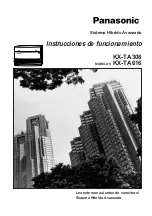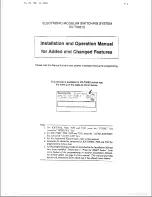
Page 3
SKU 66305
for technical questions, please call 1-800-444-3353.
tool.
Distractions are able to result in
the loss of control of the tool.
personal safety
Stay alert. Watch what you are do-
a.
ing and use common sense when
operating the tool. Do not use the
tool while tired or under the influ
-
ence of drugs, alcohol, or medica-
tion.
A moment of inattention while
operating the tool increases the risk
of injury to persons.
dress properly. do not wear loose
b.
clothing or jewelry. contain long
hair. keep hair, clothing, and
gloves away from moving parts.
Loose clothes, jewelry, or long hair
increases the risk of injury to persons
as a result of being caught in moving
parts.
do not overreach. keep proper
c.
footing and balance at all times.
Proper footing and balance enables
better control of the tool in unexpect-
ed situations.
d.
use safety equipment.
A
dust mask, non-skid safety
shoes and a hard hat must
be used for the applicable
conditions. Wear heavy-duty work
gloves during use.
e.
always wear eye protec-
tion.
Wear ANSI-ap-
proved safety goggles.
f.
always wear hearing
protection when using
the tool.
Prolonged expo-
sure to high intensity noise
is liable to cause hearing loss.
risk of electric Shock. this tool
g.
is not provided with an insulated
gripping surface.
Contact with a
″live″ wire will also make exposed
metal parts of the tool ″live″ and
shock the operator.
tool use and care
Use tie downs or another practical
a.
way to secure and support the mo-
torcycle on the platform.
Holding
the motorcycle by hand or against the
body is unstable and is able to lead to
loss of control.
do not force the Lift.
b.
Use the cor-
rect Lift for the application. The cor-
rect tool will do the job better and
safer at the rate for which the tool is
designed.
do not use the Lift if the controls
c.
do not function properly.
Any tool
that cannot be controlled is danger-
ous and must be repaired.
Store the tool when it is idle out of
d.
reach of children and other un-
trained persons.
A tool is dangerous
in the hands of untrained users.
Maintain the tool with care.
e.
A prop-
erly maintained tool reduces the risk
of binding and is easier to control.
check for misalignment or bind-
f.
ing of moving parts, breakage of
parts, and any other condition that
affects the tool’s operation.
If dam-
aged, have the tool serviced before
using. Many accidents are caused
by poorly maintained tools. There is a
risk of bursting if the tool is damaged.
use only accessories that are
g.
identified by the manufacturer for


































